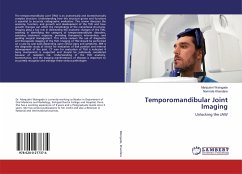The temporomandibular joint(TMJ) is a diarthroidal joint, comprising the mandibular condyle, temporal bone, articular disc.It is regarded as one of the most complex joint in the body. The articular disc is a biconcave structure composed of dense fibrous connective tissue, is divided into a thicker anterior and posterior band and a thinner intermediate zone. The TMJ is a ginglymoarthroidal joint, allowing a hinge like movement combined with an arthrodial, gliding motion. The hinge like movement represents the half of the mouth opening, whereas the sliding movement represents the second half, as well as the protrusion and lateral movement. Temporomandibular disorder(TMD) is an umbrella term, embracing condition which involve the temporomandibular joint(TMJ), masticatory muscles and/or associated structure. Disc displacement, TMJ sounds, congenital malformation, degenerative joint disease (DJD) are possible conditions affecting TMJ. Many efforts have been made along the past years to develop standardized criteria for TMD diagnosis.5Given the complex nature of classifying temporomandibular disorder (TMD), several system have been developed and widely used.








